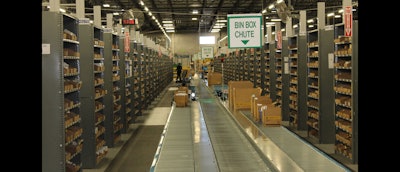
Manufacturers today face higher customer expectations across the board, especially when it comes to the service side of the business. So, to maintain customer loyalty and elevate the overall integrity of the brand, parts must be delivered immediately and at a low cost to the after-sales service organization. That being said, it’s no secret that inventory optimization and part availability are top priorities among after-sales service professionals. So why is it that so many manufacturers are resisting investing in modern service parts management solutions?
A traditional Enterprise Resource Planning (ERP) system is simply an information system that integrates areas such as planning, purchasing, inventory and sales throughout an organization, but it doesn't inherently eliminate inefficiencies within the business. Manufacturers with after-sales service organizations are racking up hidden costs from capital, service, time and resources by simply relying on their traditional ERP systems for service parts management. What they don’t see is that they are leaving hidden profits on the table.
If that simple equation isn’t enough to prove the profit lever that is modern service parts management, here are five points that highlight how traditional ERP systems cost companies money every day they go without an intelligent service parts management solution:
- It’s all manual. Relying on ERP for service parts management still requires manual processes (not to mention multiple reviewers) to achieve acceptable inventory performance. This means time and budget are being spent managing the ERP system, rather than on worthwhile cost-saving projects.
To minimize manual effort, and ensure more efficient processes, the best service parts management solutions use end-customer demand to create pull-driven replenishment planning at all levels of the supply chain. And with the goal of increasing service and optimizing inventory, the process takes into account existing stocks, local and global planned movements, variable lead times and replenishment planning policies.
- It’s not predictive. ERP systems lack the necessary analytical tools to predict the impact of changing service levels, stock levels and invested capital targets. Balancing service levels against inventory levels can pose a big risk, with significant cost implications. Inventory analysis and simulation, provided by a modern service parts management solution, can help improve decision-making and produce “what-if” scenarios before implementing major policy changes.
- It’s not global. ERP systems are simply not designed for global, multi-location service part distribution networks. Modern service parts management solutions are designed specifically for multi-level inventory management, producing an accurate forecast at all points in the service lifecycle of a product, and planning across the entire service supply chain to optimize and right size inventory. Not to mention, service parts management solutions that can provide users with full network inventory levels from a single screen equip organizations with the best possible information for decision making.
- It’s disconnected. Many manufacturers have locations that operate through independent systems, and these disconnected systems add levels and levels of inefficiency throughout the service supply chain. A single service parts management solution, however, lays the foundation for a coordinated global service supply chain across multiple systems. It’s hard to argue with the immediate benefits of a coordinated system, like improved excess material utilization and better global inventory positioning.
- It’s antiquated. Traditional ERP systems lack advanced, modern functionality, which is required for modern service parts planning. One example is planning for rotable parts, which is different than planning for consumable parts. Automated, cloud-based service parts management systems provide advanced optimization for rotable items and dynamic inventory policies. Inventory management systems manage scenarios that take into account the repair lead time versus supplier lead time, along with the effect of scrapping.
So, while traditional ERP systems can leave businesses in the dark about the relationship between inventory management and customer service, modern service parts management solutions can help manufacturers increase margins, customer service levels and overall uptime standards.
 Gary Brooks, Chief Marketing Officer at Syncron
Gary Brooks, Chief Marketing Officer at SyncronIt’s plain to see that deploying an intelligent service parts management solution not only reduces hidden costs behind antiquated ERP systems, but improves efficiency on all fronts of the after-sales service process. So, what are modern manufacturers waiting for?
Gary Brooks joined Syncron in 2015 as Chief Marketing Officer. With 20 years of marketing experience, Brooks is a revenue focused B2B marketing executive who believes in qualitative work with quantitative results to deliver breakthrough revenue performance.























